Instrumentation
Students in the Radlauer Research Group use a wide variety of equipment and instrumentation for our research. Some of this is standard for any synthetic chemistry lab and some is specialized for the handling of air- and water-sensitive chemicals (i.e. chemicals that will react with O2 or H2O). In terms of analytical equipment, though we do have a few instruments housed in our own laboratory, many of the instruments we use are part of shared facilities in the SJSU Department of Chemistry including the FAMILab.
Standard Synthetic Chemistry Equipment
Fume Hood
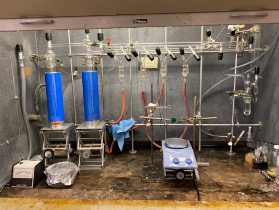
A fume hood is where most of our work takes place. It has a ventilation system that limits our exposure to harmful chemicals.
Stir Plate
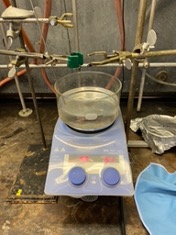
Stir plates are used with a magnetic stir bar to mix solutions. Most stir plates also contain a heating element, so that solutions can be heated and stirred simultaneously.
Analytical Balance
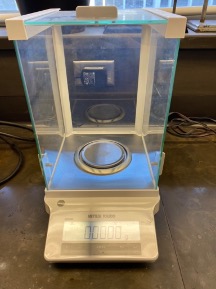
Being part of a research lab doesn’t mean that all of our equipment has to be big and complex. We also need to use analytical balances to measure out solids and other reagents.
Rotovap (rotary evaporator)
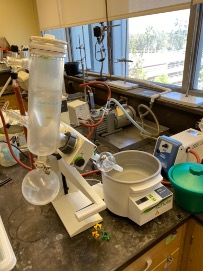
The rotovap (or rotary evaporator) allows us to remove substances with a low boiling point by pumping on them with a vacuum. The rotation of the flask reduces the chance of our solution bumping during the evaporation process. The volatile materials that are pumped away from our desired materials are condensed using a cold finger so that we can safely collect and dispose of them.
Vacuum Oven
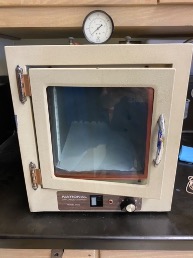
Vacuum ovens are used to dry chemicals or remove volatile solvents. By altering the pressure inside of the oven, we don’t need to use as high a temperature for more delicate materials.
Specialized Equipment for Handling Air- and Water-Sensitive Chemicals
Schlenk Line
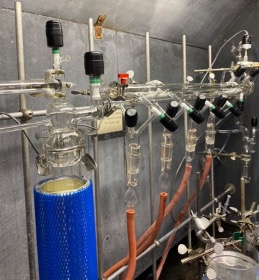
The Schlenk line is an apparatus that allows us to do air- and water-free chemistry. It consists of a double glass manifold that gives access to an inert gas (such as nitrogen) and vacuum.
Glovebox
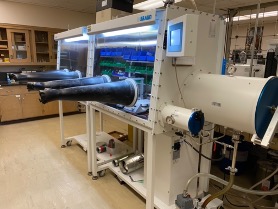
Similarly to the Schlenk line, a glovebox also allows us to do air and water free chemistry. One major difference between the two is that once the tools are prepared and brought into the glovebox, it can basically act as an air and water free benchtop allowing us to use standard skills, but with really big rubber gloves. The Schlenk line, on the other hand, requires “Schlenk technique” and (often) fancy glassware that goes with it.
Glassware Oven
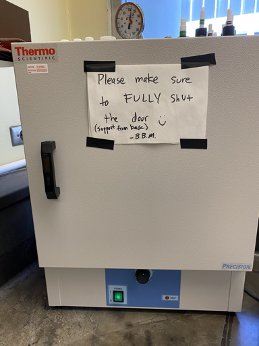
This is another instrument that you may recognize! When using the Schlenk line or a glovebox, any water or moisture must be removed from all glassware. This glassware oven ensures that the glassware is dried and ready for use.
Solvent System
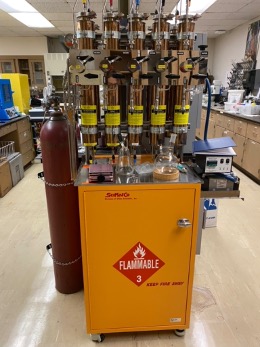
A solvent system dries solvents (i.e. removes water) by passing the solvent through multiple columns of drying reagents. When retrieving solvents, the collection flask is placed under vacuum and an inert gas aids in the delivery of the dried solvent.
This solvent system was purchased using funding from a 2020 National Institutes of Health (NIH) Academic Research Enhancement Award (AREA) for Undergraduate-Focused Institutions: “Metallopolymers as Functional Metalloprotein Mimics with Secondary Coordination
Sphere Interactions” Grant # 1R15GM132857-01A1.
Analytical Equipment (in the Radlauer Lab and shared within the Department of Chemistry)
UV-Vis Spectrophotometer
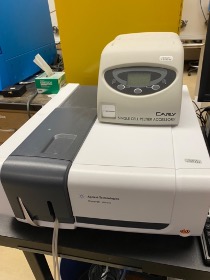
You might recognize this instrument from some of your chemistry labs! This spectrophotometer measures how much light a substance absorbs by comparing the intensity of light that passes through the sample to the intensity of light that passes through a blank.
Nuclear Magnetic Resonance (NMR) Spectrometer
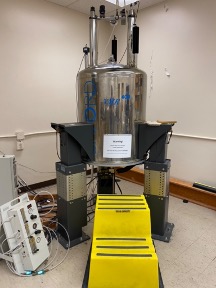
An NMR instrument allows us to identify molecules based on the chemical neighbors of the NMR active atomic nuclei within these molecules. It uses a strong magnetic field and radio frequency pulses to affect the nuclear spins.
Electron Paramagnetic Resonance (EPR) Spectrometer
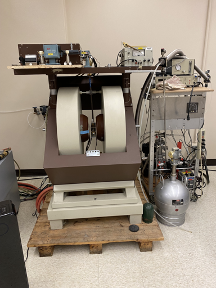
An EPR instrument allows us to analyze compounds with unpaired electrons. Similar to NMR spectroscopy measurements, EPR spectroscopy uses a magnetic field, but it measures the spins of electrons rather than nuclei.
Infrared (IR) Spectrometer
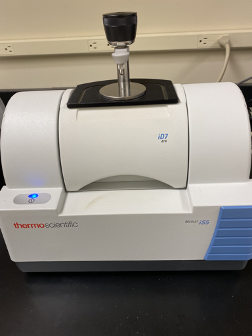
An IR spectrometer measures how the sample interacts with infrared radiation. It gives us an absorption spectrum that can indicate which functional groups are found in our sample.
Gas Chromatography Mass Spectrometry (GCMS)
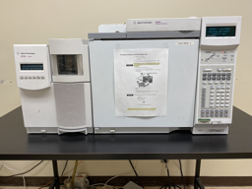
A GCMS combines both gas chromatography and mass spectrometry into one analytical machine. GC provides a method to separate different chemicals in a sample and MS provides a reading of the mass of the species coming off of the GC. We can use it to identify compounds and to quantify the amount of each substance in a sample.
Atomic Force Microscope (AFM)
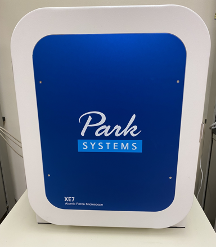
An atomic force microscope has the ability to measure forces between the probe and the sample. The measurements can create a topographical image of the sample.
X-Ray Diffractometer (XRD)
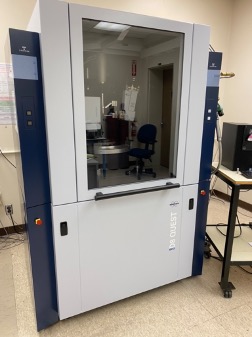
An X-ray diffractometer determines the crystallographic structure of a sample. The sample is exposed to radiation and the instrument measures the scattering angles of the X-rays.
This XRD instrument was purchased with a 2019 Department of Defense (DoD) Research and Education Program for Historically Black Colleges and Universities and Minority-Serving Institutions (HBCU/MI) Equipment/Instrumentation Grant: “Acquisition of an X-ray Diffractometer for Research and Teaching in the Physical Sciences” Award # W911NF1910520.